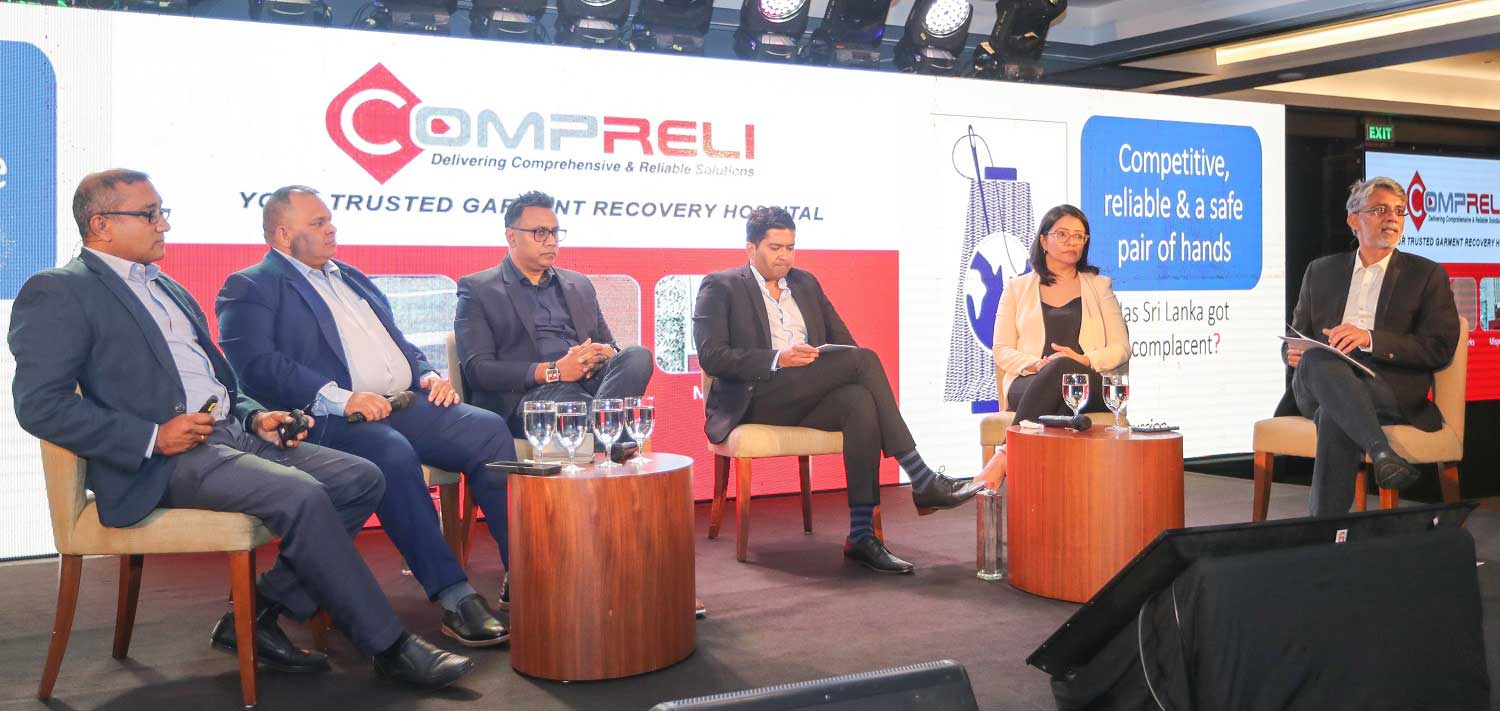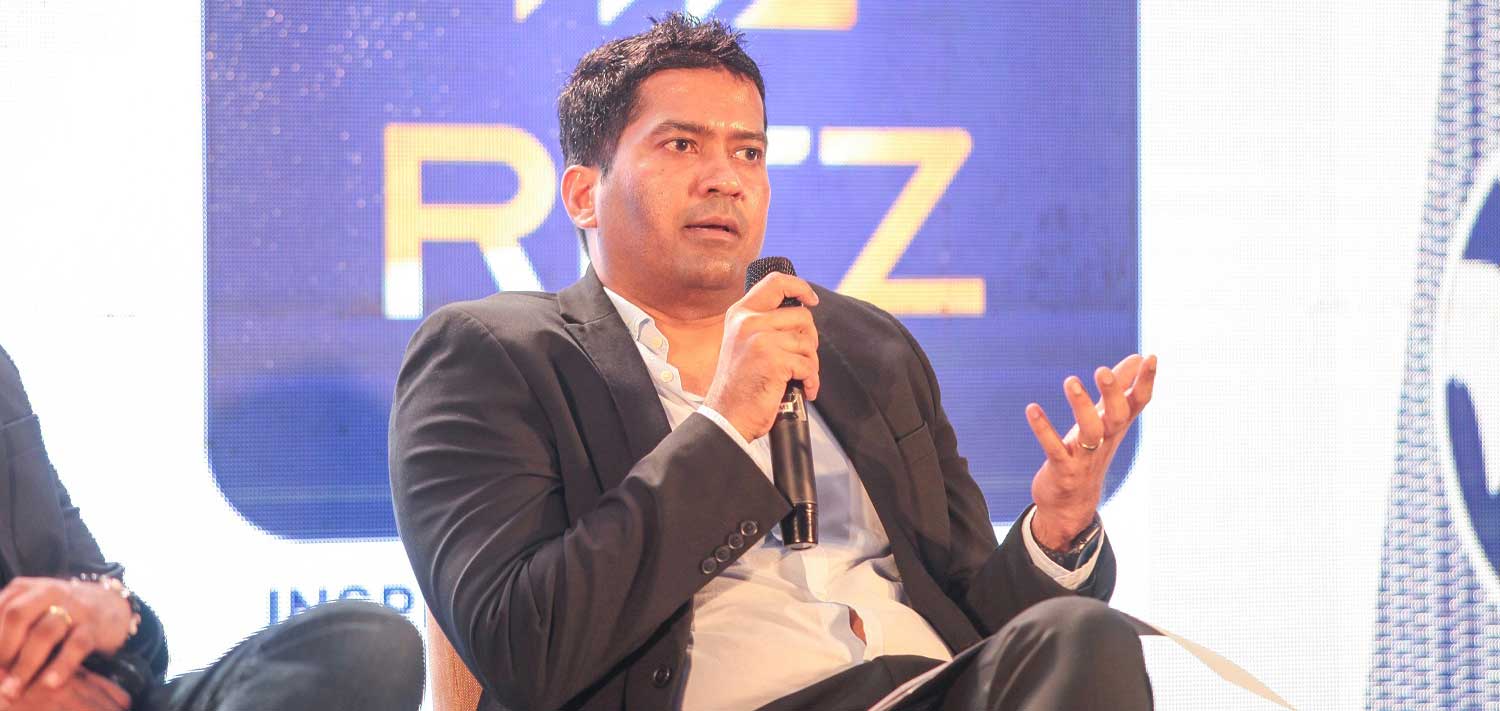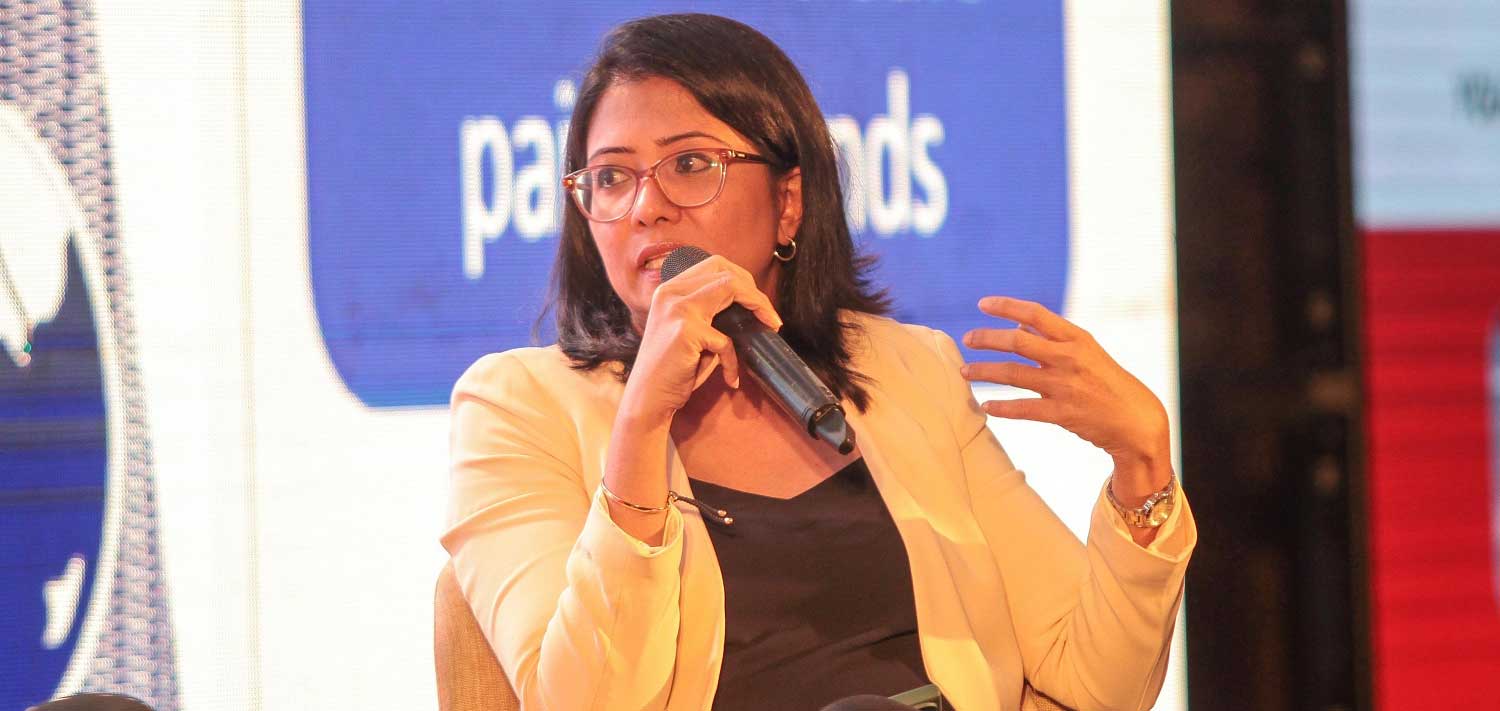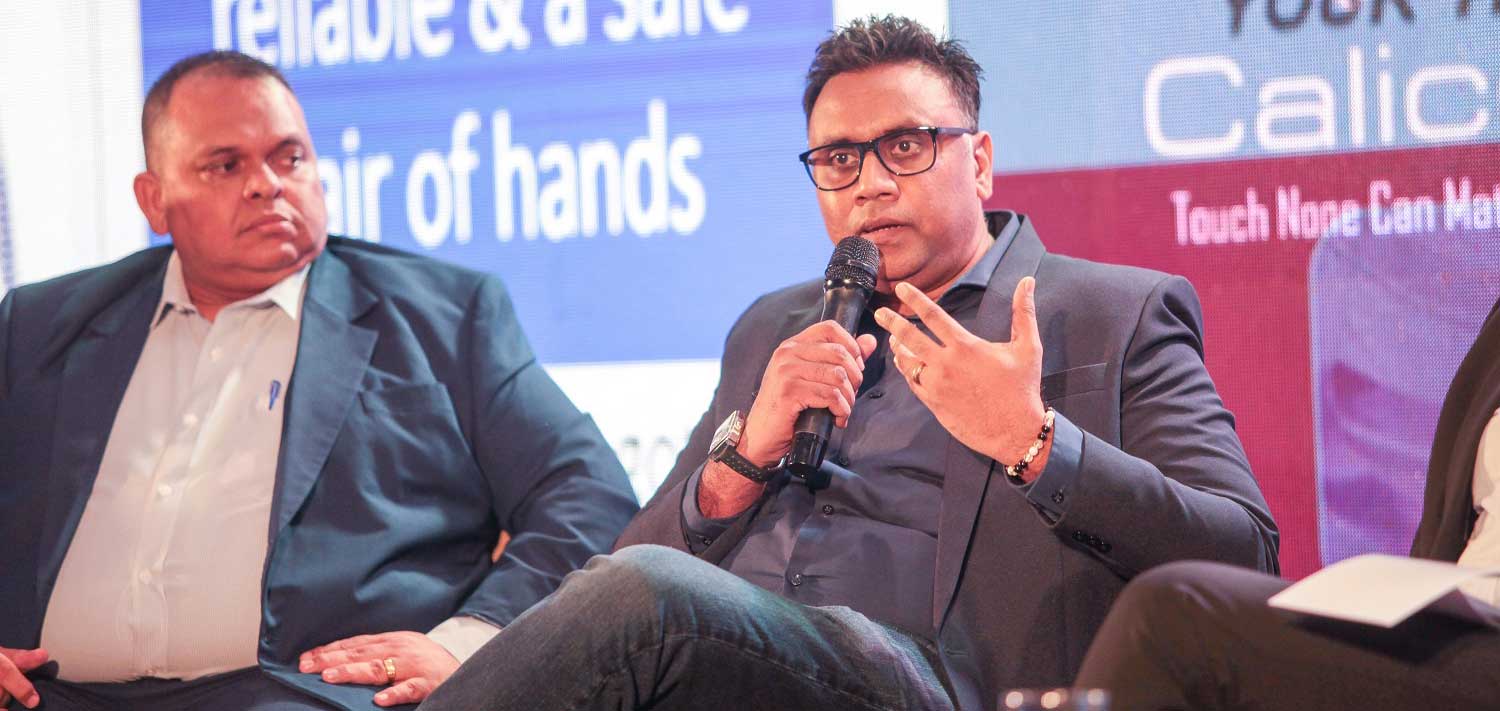SRI LANKA APPAREL SOURCING ASSOCIATION
Article for Sri Lanka Apparel Sourcing Association (SLASA)
 The panel moderated by SLASA Secretary General Gopal K Iyer (far right) with panelists L to R: SLASA Secretary Gayan Galapitage, Ex-Co Member Padmal Silva, Member Sandun Silva, Chairman Wilhelm Elias and Vice Chairman Azmeena Kareem
The panel moderated by SLASA Secretary General Gopal K Iyer (far right) with panelists L to R: SLASA Secretary Gayan Galapitage, Ex-Co Member Padmal Silva, Member Sandun Silva, Chairman Wilhelm Elias and Vice Chairman Azmeena Kareem
 SLASA Chairman Wilhelm Elias explains a point during the discussion
SLASA Chairman Wilhelm Elias explains a point during the discussion
 Vice Chairman Azmeena Kareem adds some insights
Vice Chairman Azmeena Kareem adds some insights
 SLASA Member Sandun Silva speaks during the discussion while Ex-Co Member Padmal Silva looks on
SLASA Member Sandun Silva speaks during the discussion while Ex-Co Member Padmal Silva looks on
Quote 1
We were innovative, pushed boundaries on product and were a safe and reliable pair of hands. We set the standard for this region, and we have lost it due to complacency setting in. We must regain our position as a country of excellence.
Quote 2
‘What Sri Lanka hasn’t explored is, how do we leverage on the synergies and collaborations India has’
Quote 3
‘Countries like Bangladesh and India were hungry and with buyers chasing margins and cost becoming a major factor, those countries read the signs and reacted to these faster than Sri Lanka did’
Head
Apparel Buyers’ Association (SLASA) emphasizes regaining status of being ‘competitive, reliable and in a safe pair of hands’
- SL apparel export numbers decline 16.5% from Jan to May 2023
- Bangladesh grown phenomenally, as has India, Vietnam, Turkey
- SLASA holds discussion to push competitiveness agenda forward
August 21st 2023 - Colombo, Sri Lanka - The Sri Lanka Apparel Sourcing Association (SLASA) held a sundown meeting with the objective of moving beyond immediate challenges facing the apparel industry and obtaining the buy-in of the industry to make it more competitive, given the lessons learned this year. While the Sri Lankan apparel industry’s export figures were phenomenally good in 2022 despite the fallout from the pandemic and the economic crisis – a total of USD 5.5 billion, the highest increase of 10 percent since the crisis, the industry’s performance hit a low from the beginning of 2023.
Presenting the business side was Secretary of SLASA, Gayan Galapitage. “Global inflation, softening retail markets, the Russia-Ukraine war and uncertainty in financial markets all helmed the challenges that led to Sri Lanka’s apparel exports reducing 16.5 percent in the first five months of 2023 with the primary markets of US, EU and UK all facing unprecedented challenges. US orders regressed by a significant 22 percent, the UK by 15 percent and the EU by 14 percent.”
Panelists at the discussion were Chairman of SLASA Wilhelm Elias, Vice Chairman Azmina Kareem, Ex-Co Member Padmal Silva and Committee Member Sandun Silva with the session moderated by SLASA’S Secretary General Gopal K Iyer.
Elias, given his 25-year experience has global insights into the industry, added that Sri Lanka imports about 70 percent of the fabric requirement which translates to high fabric prices.
Observing the reasons for the downturn in fortune for Sri Lanka’s apparel industry, Elias opined five primary reasons: “Customers being overstocked post-Covid as a result of buying in advance due to extended lead times, inflation in the UK and the EU reaching unprecedented levels, the Sterling Pound losing ground to the US dollar which resulted in 11.5 percent decline in buyer budgets, Sri Lanka’s destabilization in May 2022 seeing customers shift to Bangladesh and India and both these countries pushing costs down significantly to keep factories operational, which Sri Lanka found difficult to compete with,” he stated.
Kareem pointed out that customers having lesser disposable income is a fact that won’t change anytime soon. “Countries like Bangladesh and India were hungry and with buyers chasing margins and cost becoming a major factor, they read the signs and reacted to these faster than Sri Lanka did,” she said. Sandun Silva added context; “Sri Lanka overstocked in the US and was not proactive enough to understand the market changes at the time. Sri Lanka has become complacent with what the country enjoyed before and was not open to change.”
Padmal Silva explained that India’s domestic market in 2022 was USD 100 billion and that by 2028 will increase to USD 175 billion. “Being the fastest growing economy in the world and one which we supply to, India has been pragmatic, studying global markets and leading the trend. US brands are in India now because they see potential. As and when premiumizing happens and the massive middle-class population increases, disposable income will in turn, go up. What Sri Lanka hasn’t explored is how we leverage on those synergies and collaborations India has already forged.”
Elias further explained that Sri Lanka’s fabric offer although having played a vital role for thirty years, is very basic given that there are still only four jersey mills in the country. “We have to push boundaries, invest in R&D and strive for excellence. Sri Lanka was known as a reliable and safe pair of hands that always brought new and innovative products to the table. But we have been beaten at our own game. It’s not that we have regressed, it’s just that our competitors have progressed in our strongest points of years ago. We are just not aggressive enough.” Kareem amplified this by saying, “We are not being strategic as an industry; there is no newness. As an industry, we have to come together because otherwise, it’s a missed opportunity.”
Elias reiterated that unless the industry united, focused on issues and fast-tracked a pathway for the immediate future, the future looked bleak. “We can’t go cheaper but we can be more competitive. We must focus on pricing from wash plants to trim and fabric supplies. We must strive for excellence again. We had it, but lost it and so, we must inculcate it into our culture once more. The FTAs are important as are roadshows. We have to be louder as an industry, reestablish our USP, re-set and create greater awareness of how great we were and demonstrate via a clear strategy on the changes we are making as an industry that once set the standard for this region.




